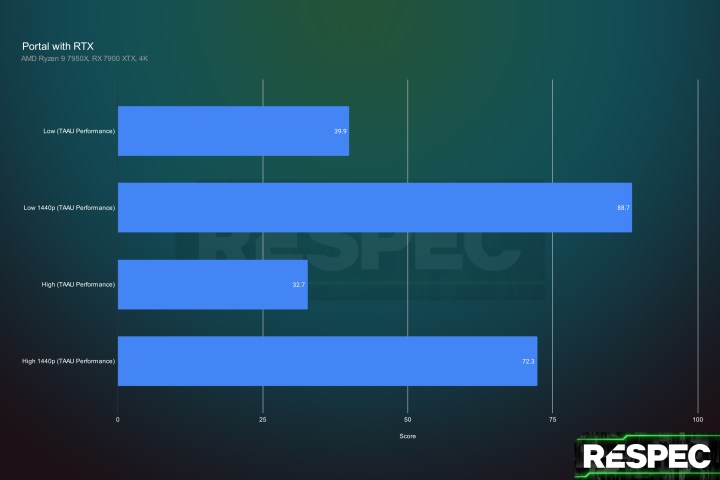AMD has made significant strides with its current-gen graphics cards, coming closer to Nvidia in terms of ray tracing performance. However, the next frontier of gaming, path tracing, requires even more powerful hardware, a capability that AMD’s current lineup falls short of.
Nvidia currently dominates path tracing with superior ray tracing and technologies like DLSS 3.5, showcasing better performance in titles like Portal with RTX. AMD’s RX 7900 XTX struggles to achieve satisfactory frame rates at 4K even in low settings, highlighting the limitations of current AMD GPUs.
Player two in path tracing

Despite advancements like AFMF, AMD’s performance in path tracing titles like Portal with RTX remains underwhelming compared to Nvidia. The gap in performance and support for technologies like DLSS 3 puts AMD at a disadvantage in delivering the premium gaming experience sought by enthusiasts.
A key focus for the next generation

AMD’s focus for the next generation of graphics cards should prioritize path tracing capabilities. Improvements in ray tracing performance and robust support for technologies like FSR 3 are essential to close the gap with Nvidia and deliver a more competitive gaming experience.


